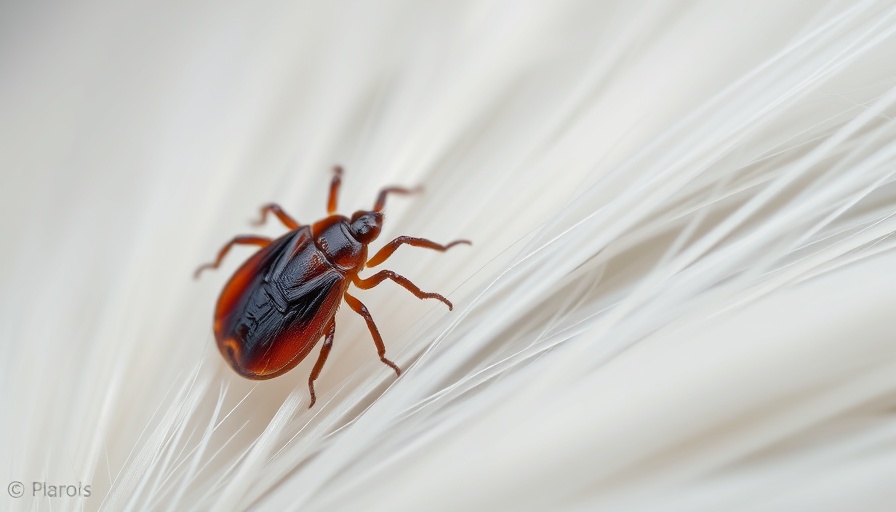
Understanding the Importance of Tick Protection
As pet owners, ensuring our furry friends are protected against dangers lurking in the grass is a top priority. Ticks, particularly in warmer months, can pose significant health risks to dogs by transmitting diseases such as Lyme disease and Rocky Mountain spotted fever. With climate change altering tick populations, it's more crucial than ever to equip ourselves with natural tick repellents that are safe and effective.
Why Go Natural?
Many pet owners are steering clear of chemical tick repellents due to concerns over toxicity and adverse side effects. Natural remedies not only reduce the risk of harmful reactions but also align with a more holistic lifestyle. Common natural ingredients like essential oils have shown effectiveness against ticks, proving to be a suitable alternative without the worry of chemicals harming our pets or the environment.
Top Natural Tick Repellents to Consider
When it comes to effective natural tick repellents, several options are worth considering. Here are a few top choices, both DIY and store-bought:
- Essential Oils: Oils such as cedarwood, lemongrass, and lavender can be valuable in repelling ticks. These can be diluted with a carrier oil and applied on your dog's collar or fur.
- Apple Cider Vinegar: Mixing equal parts of water and apple cider vinegar in a spray bottle makes for an excellent natural tick repellent. Sprays can be applied to the dog's coat before outdoor activities.
- Neem Oil: Known for its pest-repelling properties, neem oil can be diluted and used topically or in a shampoo. This oil is not only natural but also promotes skin health.
- Garlic: Though somewhat controversial, small amounts of garlic are believed to create a natural scent that repels ticks. Always consult your vet before making significant dietary changes.
- Commercial Natural Solutions: Many brands now offer natural tick prevention products that incorporate various essential oils into their formulas. Brands to explore include Wondercide and Vet’s Best.
A Step-by-Step Guide to Creating Your Own Repellent
Creating your own natural tick repellent can be a fun and rewarding project. Here’s a simple recipe to try:
- Gather your ingredients: 10 drops of essential oils (e.g., cedarwood, lemon, or eucalyptus), 2 tablespoons of carrier oil (such as coconut or jojoba oil), and ½ cup of water.
- Mix the ingredients in a spray bottle.
- Shake well before each use and spray lightly on your dog’s fur, avoiding the eyes and direct contact with sensitive areas.
Precautions and Considerations
While natural repellents are generally safe, it’s essential to consider your dog's specific needs and any potential allergies. Always perform a patch test before widespread application. Moreover, it’s beneficial to consult with your veterinarian to ensure that any natural remedy you use suits your dog’s health profile. Remember, while natural products can reduce tick encounters, they should complement regular preventive measures like tick checks after outdoor outings.
Future of Natural Tick Prevention
As the understanding of natural pest repellents grows, so does the innovation behind them. Future advancements may see even more effective formulations utilizing science-based research on natural ingredients. As awareness of pet health continues to rise, more sustainable and eco-friendly pest control options are expected to flood the market.
The Heart of Responsible Pet Ownership
Ultimately, choosing natural tick repellents reflects a broader commitment to our pets' health and the environment. By opting for non-toxic solutions, pet owners demonstrate their responsibility and love for their animals. Protecting our dogs from ticks not only keeps them safe but fosters a bond of trust and care between pet and owner.
As we continue to navigate the challenges posed by ticks and other pests, embracing natural and holistic solutions presents an opportunity for pet owners to contribute positively to their well-being. For more tips on creating a healthy lifestyle for you and your pet, stay tuned for upcoming articles!
 Add Row
Add Row  Add
Add 




Write A Comment